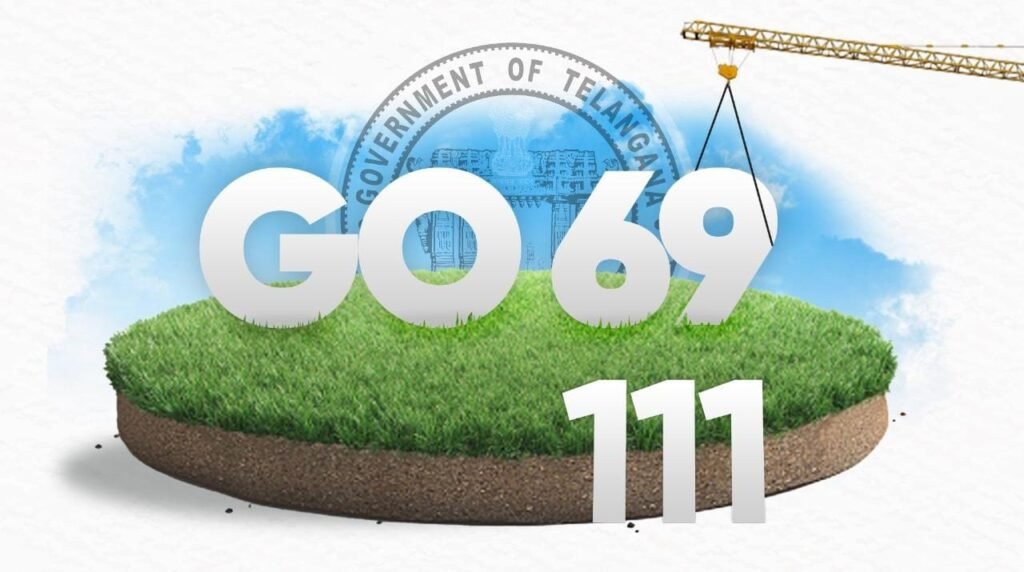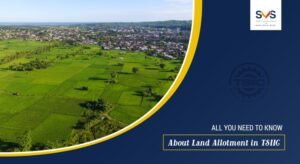Telangana Chief Minister K Chandrashekhar Rao’s recent announcement on GO 111 elicited mixed reactions from various groups, ranging from realtors to environmentalists. However, the real estate sector, in particular, appears to be optimistic about real estate development in areas covered by GO 111. According to reports, GO 111 was issued in 1996 during the former state of Andhra Pradesh to prevent heavy construction activities and undue industrialization in 83 villages surrounding Himayat Sagar and Osman Sagar.
According to real estate experts, lifting the GO 111, which affects 83 villages and covers over 1.32 lakh acres, will result in a surge in construction activity and contribute to Telangana’s economic growth.
Now, let’s delve into GO 111’s actual history.
GO 111’s History
To learn more about the GO, it’s important to first understand the two reservoirs it works with: Osmansagar and Himayatsagar.
In 1908, Hyderabad experienced one of the worst floods in its history, as unprecedented rainfall caused the Musi River to swell and overflow. Several people were killed, and many more were left homeless, as floodwaters washed away houses, property, and belongings, as well as killed many animals and cattle.
The sixth Nizam of Hyderabad, Mir Mahboob Ali Khan, invited the ace engineer M Visvesvaraya to “flood-proof” the city, determined that the city should never bear the brunt of such a natural disaster again in the future. Visvesvaraya then proposed two balancing reservoirs on the Musi River in order to control the river’s water level before it entered the city.
Himayatsagar was built in 1927, and Osmansagar in 1920. Later, until the late 1990s and early 2000s, the reservoirs were Hyderabad’s primary source of drinking water. The united government of Andhra Pradesh issued GO 111 in this context in 1996.
What exactly is GO 111?
Prior to our independence, the Nizam of Hyderabad issued a “firman” (royal decree) prohibiting any activity or construction that would obstruct or pollute the flow of water in the catchment area of the two reservoirs.
So, in 1996, the government of the United State of Andhra Pradesh decided to implement GO 111, which would follow the principle of the main idea of protecting the reservoirs that are the main sources of drinking water for people in Hyderabad. Despite the fact that the two lakes were declared protected zones at the time, rapid urbanisation was taking place, and in response, the government decided to declare a no-development zone within a 10 km radius of the two lakes’ catchment areas.
The order forbids industries, residential colonies, major hotels, and other establishments that could harm the environment. Agriculture and allied services, on the other hand, are completely legal. Shamshabad, Shankarpally, Rajendranagar, Shabad, Chevella, and Moinabad mandals are among the 83-plus villages covered by GO 111.
The primary goal of this G.O. is to safeguard environmental resources. As a result, Hyderabad’s water needs will be met.
GO 111 has an impact on real estate in the specified areas because the catchment zone villages are subject to specific restrictions; no development activities are permitted in these areas. The land value may not rise as a result of the lack of proper development. Furthermore, it will be more difficult to create jobs in this field.
What is the purpose of GO 69?
The State government has decided to lift the restrictions imposed under paragraph 3 of GO 111 on the condition that the water quality of these two reservoirs is not harmed in any way, and that all efforts are made to improve their water quality. The government has also formed a committee to develop the guidelines and detailed regulations.
The Committee’s terms of reference include suggesting measures for protecting and preventing pollution to these two reservoirs, broad guidelines for allocating to green zones, modalities for developing trunk infrastructure in this area, and means of resource mobilisation for taking up trunk infrastructure, such as roads, major drains, STPs, diversion drains, and so on.
The Committee will also recommend an appropriate institutional framework to take up infrastructure and regulate development in this area, necessary regulatory measures to be insisted upon when granting any layout or building permission, and changes to the existing legal framework, if any, to effectively regulate development in this area.
The orders also stated that while finalising the guidelines, it must be ensured that not only proper STPs but also diversion drains are in place to carry treated water without allowing sewage water into the two reservoirs. The Committee would also look into ways and means of raising funds to meet the infrastructure needs in this area.
Overall, the government’s reimplementation of GO 111 may take time. Real estate investors, on the other hand, can exhale a sigh of relief because GO 111 has nothing to do with Yadagirigutta. This means that investing in land in Yadagirigutta is exempt from GO 111.
SVS Infra Developers believes in creating wholesome investment opportunities that include strategic development while never compromising on quality of delivery. In order to maximise your returns, we carefully select our development sites. Because of the tremendous potential of this blessed land, the Lakshmi Enclave was thoughtfully located in Yadagirigutta. The 40-acre layout of Lakshmi Enclave and the 12-acre layout of Indraprastha have been approved by DTCP, ensuring the security of your investment, and our professional team effectively handles all of your queries. Please visit www.svsinfradevelopers.com and schedule your free site visit today to learn more about us and our projects.



